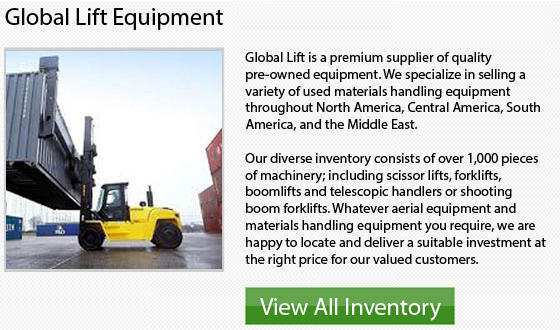
The following add-ons are helpful for narrow aisle lift trucks:
Side shift: Side shift is an option which permits the lateral movement of the load without having to move the model. This allows loads to be accurately placed.
Tilt mast: The optional tilt mast allows the forks to shift both backwards and forwards. This is great in situations where loads aren't entirely level. In order to gain more stability while moving a loaded truck, the mast could be tilted backwards.
Extendable forks: The option of extendable forks helps the "reach" of the lift truck to extend for stacking pallets one in front of the other, known as "double-deep" loading.
Operator platforms: Operator platforms allow some NA lift trucks to raise and lower the operator whilst the forks are being raised or lowered. This provides optimum control and visibility while handling loads at heights of 6 m to 9 m.
Forklift on a Ramp
Operators have to be properly taught and should be assessed and licensed. It is very important for anybody operating a forklift to be educated about safety regulations and problems. Operators must understand how to adjust on uneven surfaces or in cases where the weight of the load alters the center of gravity. Safety measures cover safely using a forklift on a ramp, which is always happening because the driver will usually need to drive up and down ramps to load and unload containers.
Tips for Using a Lift Truck on a Ramp
1 When approaching and driving up and down the ramp, drive slowly. The risk of mishaps is higher when driving fast because this can upset the equipment's center of gravity.
2 When not carrying a load, drive the lift truck in reverse while moving up an incline on a ramp.
3 While moving down an incline on a ramp with no load, drive forward.
4 Tilt the forks a little back to shift the center of the load to the machine's front, while moving up or down a ramp when carrying a load.
5 Drive forward up a ramp while carrying a load in order to make the load more stable.